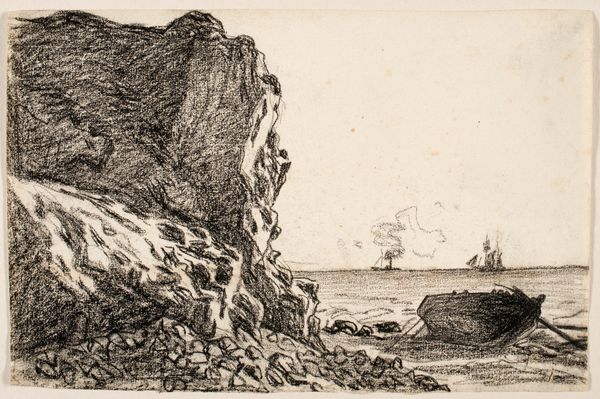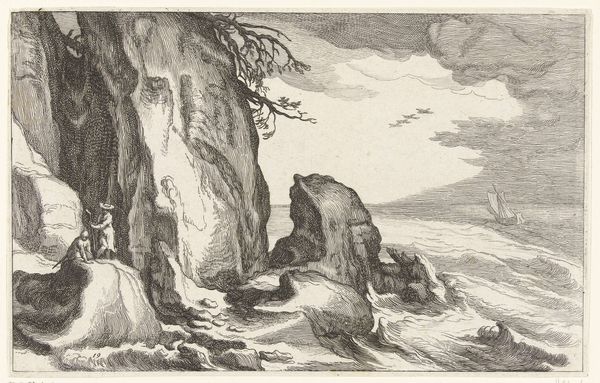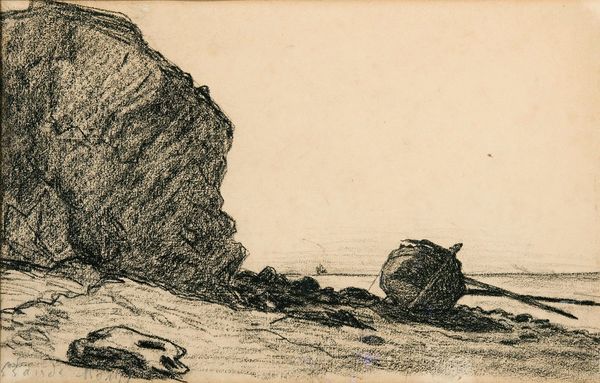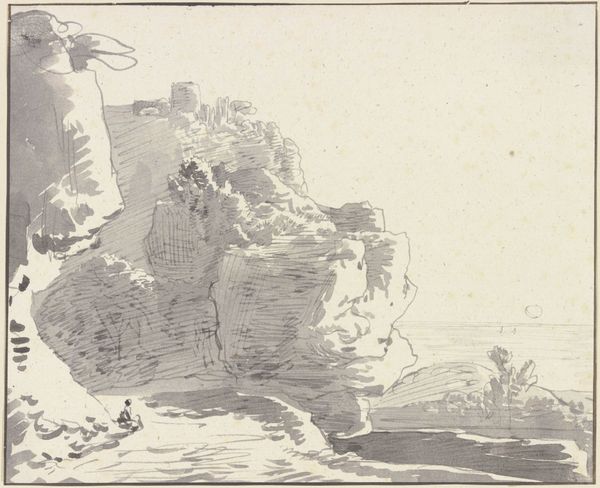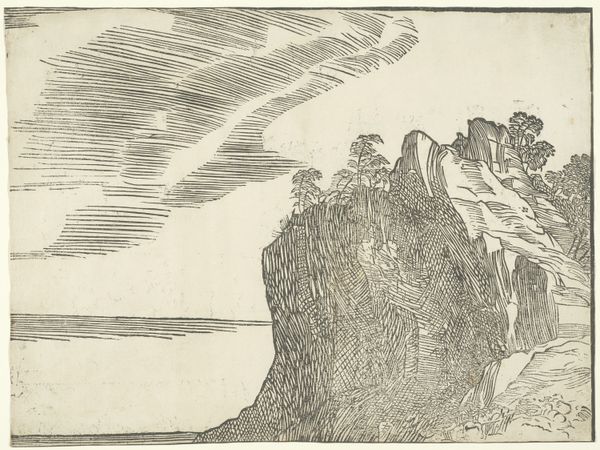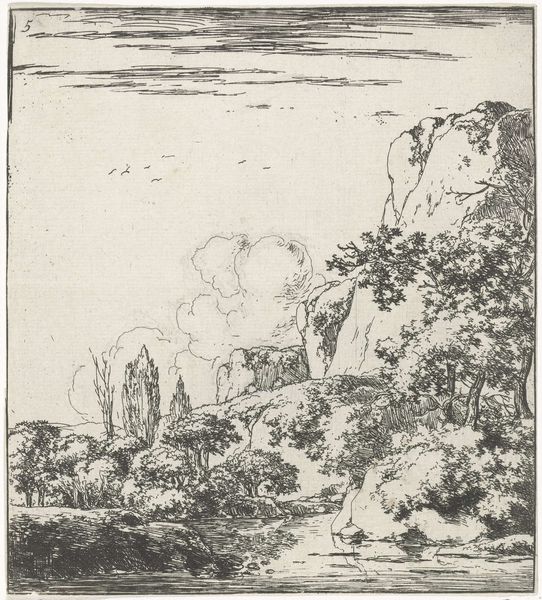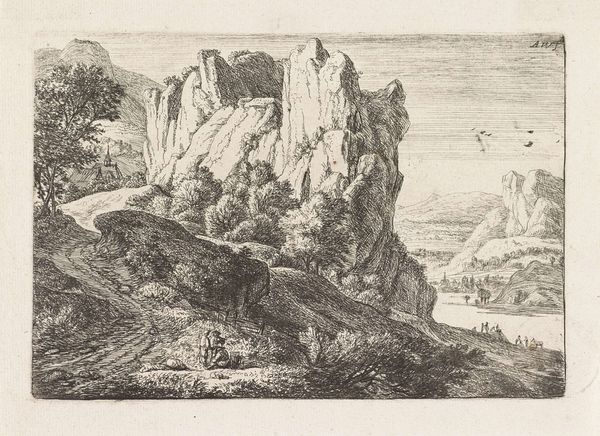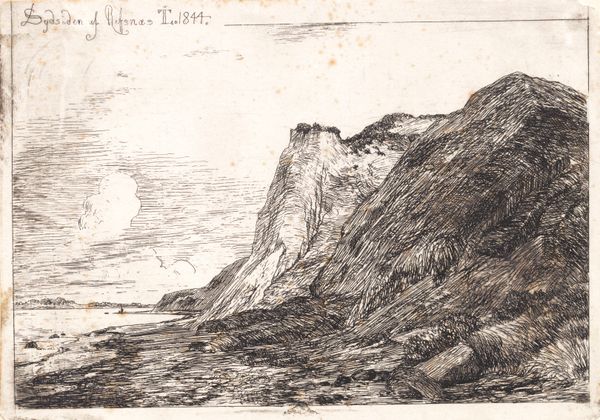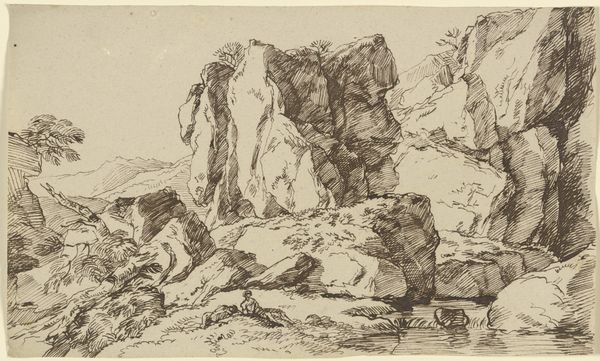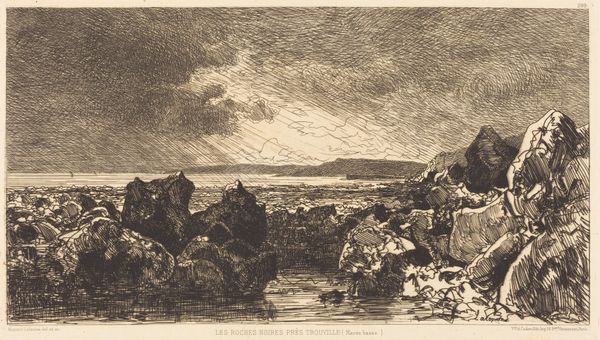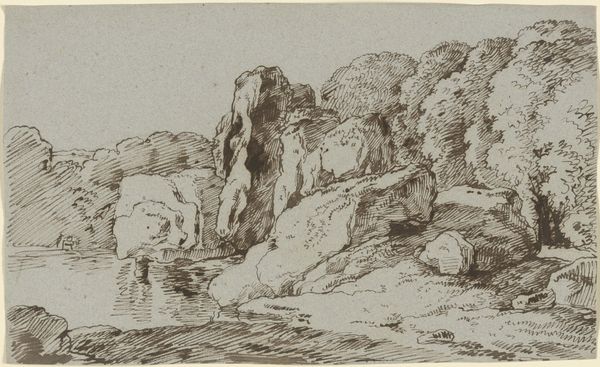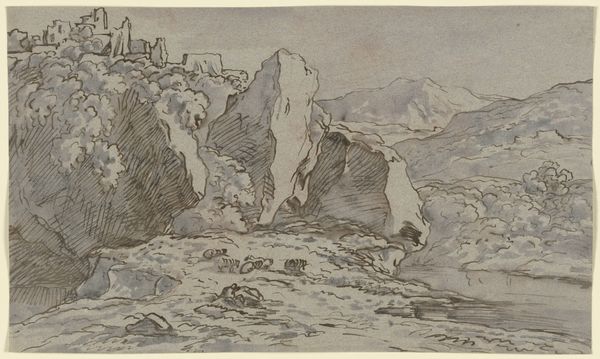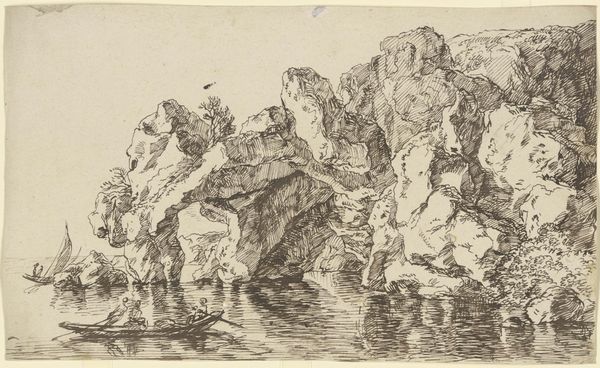
print, etching
#
ink drawing
#
dutch-golden-age
# print
#
etching
#
landscape
Dimensions: height 116 mm, width 127 mm
Copyright: Rijks Museum: Open Domain
Editor: So, this is "Rots aan het water," dating from between 1633 and 1670, by Herman Naiwincx. It's an ink drawing and etching, a print. It feels…quiet. Brooding, maybe? What do you see in this piece? Curator: The drama of light and shadow! Look how the stark lines delineate the rocky cliffs, almost like hieroglyphs etched by nature itself. The water reflects a silent story, a cultural memory of the Dutch Golden Age. Editor: A story? Curator: Absolutely. The starkness of the etching mirrors the era’s complex relationship with the land—reclamation and dominance over nature intertwined with reverence. Consider the birds. Tiny details, but suggestive of freedom, escape, a yearning perhaps, rendered in their flight, echoed throughout Dutch landscape painting. What might the "rots," these rocks, have signified for the viewer of the time? Editor: Perhaps a feeling of permanence? The cliffs are very prominent; they suggest the power of nature. Curator: Indeed. The solid presence set against the impermanence of water and clouds. The clouds themselves act as symbols of transience and divine power. See how their form, seemingly random, balances with the firm line of the horizon and steady rocks? It's a powerful emotional composition, isn't it? Editor: It really is. I didn’t consider the emotional element, but you’re right. It definitely makes it a richer experience, thinking about these deeper cultural meanings. Curator: It is amazing how such seemingly simple landscapes offer us the tools to understanding and remember human emotions and memories through visual cues.
Comments
No comments
Be the first to comment and join the conversation on the ultimate creative platform.
